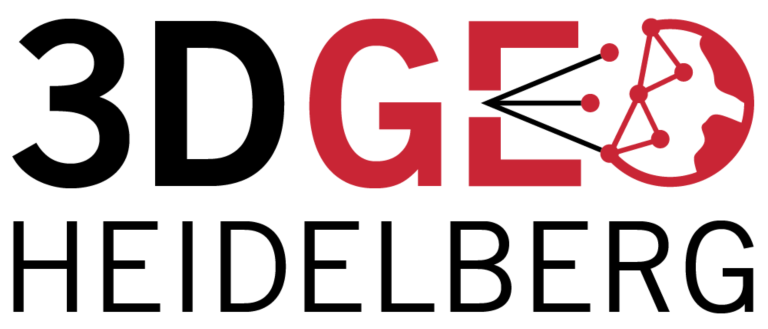Tag: laser scanning
-
Disaggregating surface change mechanisms of a rock glacier
How can multiple processes related to the deformation of an active rock glacier operating over different timescales be separated from each other? A preprint on the disaggregation of surface change mechanisms of a rock glacier has recently been published on Earth Surface Dynamics Discussions, an interactive open access journal of the European Geosciences Union. It…
-
Impact of aquisition patterns on tree model estimation from UAV LiDAR
In close collaboration with the 3DGeo Research Group, Moritz Bruggisser of the Department of Geodesy and Geoinformation (RG Photogrammetry) presented his current research progress on the impact of acquisition patterns on the robustness and accuracy of tree models derived from UAV LiDAR for forest dynamic studies. His work fits well into the scope of the…
-
SYSSIFOSS project @ 2nd symposium on satellite-based earth observation in Cologne
On November 12-13, Jannika Schäfer from KIT presented the SYSSIFOSS project at the 2nd symposium on satellite-based earth obersvation (2. Symposium zur angewandten Satellitenerdbeoachtung) in Cologne. SYSSIFOSS is a joint project between the Institute of Geography and Geoecology (IFGG) of the Karlsruhe Institute of Technology (KIT) and the 3DGeo Research Group of Heidelberg University. In…
-
Paper on High-Frequency 3D Geomorphic Observation using Hourly LiDAR Time Series
Can you imagine how much sand is being moved on the beach in the course of a week? Did you ever observe truckloads of sand being transported on the beach in the absence of storms and bulldozers? It is hardly possible to estimate to the naked eye, but can be quantified with permanent terrestrial laser…
-
Paper on Analysis of Feature Relevance in Deep Learning for 3D Point Cloud Classification
A paper investigating the relevance of (pre-calculated) features for 3D point cloud classification using deep learning was just published in the ISPRS Annals of Photogrammetry and Remote Sensing. The study presents a non-end-to-end deep learning classifier for 3D point clouds using multiple sets of input features and compares it with an implementation of the state-of-the-art…
-
Colloquium on Laser Scanning for Forestry Applications
We cordially invite everybody interested to our next open GIScience colloquium talk The speaker is Moritz Bruggisser TU Wien, Department of Geodesy and Geoinformation, Photogrammetry Division When: Monday 06.05.2019, 2:15 pm Where: INF 348, room 015 (Institute of Geography, Heidelberg University) Multi-scale laser scanning for forestry applications Airborne laser scanning (ALS) has been used for the derivation…
-
How can LiDAR data help to understand early Olmec subsistence in Mexico?
From their beginnings some 4,000 years ago to their decadence around 400 b.c., the Olmec people achieved a high level of sociopolitical complexity and dominated their native geographic territory, the southern Gulf Coast of Mexico. The first Olmec capital of San Lorenzo, Veracruz, was the only site in Mesoamerica that produced imposing monumental stone sculpture…
-
Colloquium on a low-cost mini-UAV laser scanning system (Kylin Cloud)
We cordially invite everybody interested to our next open GIScience colloquium talk The speaker is Prof. Bisheng Yang State Key Laboratory of Information Engineering in Surveying, Mapping and Remote Sensing, Wuhan University, Wuhan, China When: Monday 11.06.2018, 2:15 pm Where: INF 348, room 015 (Institute of Geography, Heidelberg University) A low-cost mini-UAV laser scanning system –…
-
4D-LiDAR Snow Cover Monitoring at the Highest Summit of Germany
The all-new terrestrial laser scanner (TLS) of the 3DGeo group (Prof. Bernhard Höfle) has been set up at the Environmental Research Station Schneefernerhaus over one week (mid of April 2018) to capture a unique highly temporal time series of the melting and degrading snow cover during the April’s week with the warmest daily maximum temperatures…
-
Cover Story of ISPRS International Journal of Geo-Information
Not undercover but on the cover: We were selected as cover story of the ISPRS International Journal of Geo-Information, Volume 6, Issue 11. In our research on “Historic Low Wall Detection via Topographic Parameter Images Derived from Fine-Resolution DEM“, we apply rapid landscape line detection to extract historic vegetable garden walls based on topographic information…
-
3D geodata acquisition in the Siberian Arctic
In September 2017, the 3D Spatial Data Processing Group (3DGeo) joined the German-Russian expedition of the Alfred Wegener Institute (AWI) for Polar and Marine Research to the Arctic research station Samoylov (N 72°22’, E 126°29’) in the central Lena Delta. Under the lead of Julia Boike, the research team maintained and expanded long-term monitoring stations…
-
Study “Multiscale analysis and reduction measures of urban carbon dioxide budget based on building energy consumption” published
The 3D spatial data processing group had the opportunity to collaborate with the team of Prof. Tzu-Ping Lin from National Cheng Kung University, Tainan, Taiwan, within the frame of a study dealing with carbon emission reduction measures in urban environments. One option of reducing carbon emission by buildings is to install photovoltaic (PV) panels in…


